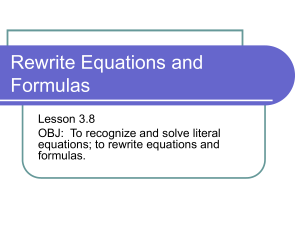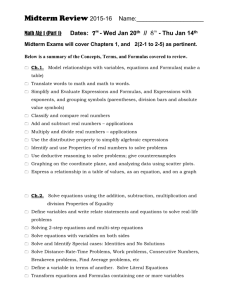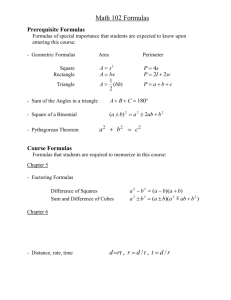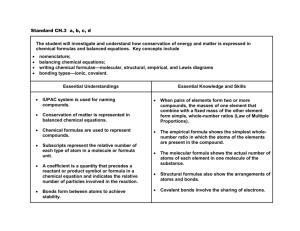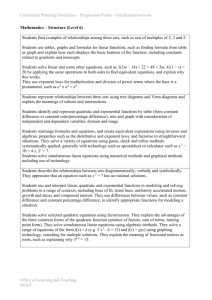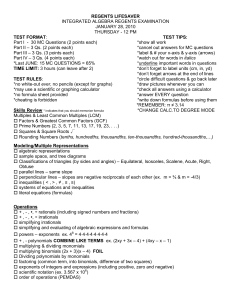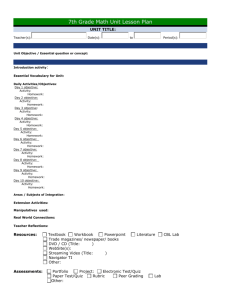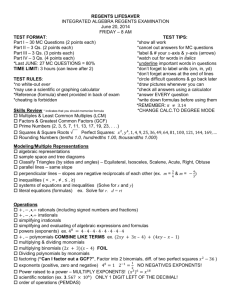Rewriting Equations
advertisement
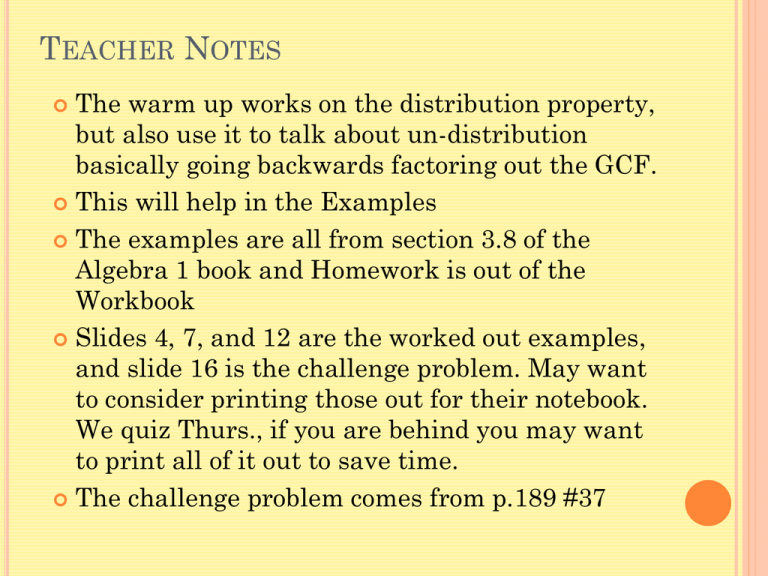
TEACHER NOTES The warm up works on the distribution property, but also use it to talk about un-distribution basically going backwards factoring out the GCF. This will help in the Examples The examples are all from section 3.8 of the Algebra 1 book and Homework is out of the Workbook Slides 4, 7, and 12 are the worked out examples, and slide 16 is the challenge problem. May want to consider printing those out for their notebook. We quiz Thurs., if you are behind you may want to print all of it out to save time. The challenge problem comes from p.189 #37 STANDARD AND LEARNING TARGET A.CED.A.4-1 Rearrange formulas to highlight a quantity of interest, using the same reasoning as in solving equations, limiting variables of interest to linear and quadratic. For example, rearrange Ohm’s law V = IR to highlight resistance R. *(Modeling Standard) I can solve literal equations using the same processes used in solving equations. I can solve real-world formulas limited to linear and quadratic variables. WARM UP Use the distributive property. 1. -9( x + 2) 2. ½ (8x – 7) REVERSE: Greatest Common Factor 3. 4x - 12 4. 15x + 10 N o t e s REWRITING EQUATIONS AA1.CC WORKED OUT EXAMPLE Which means to solve for y with x represented on the other side of the = sign as part of a relationship between the y and the x. Why is putting the equation in this form advantageous for us when graphing? EX.1 SOLVE FOR Y IN TERMS OF X. b. 2 + 6y = 3x + 4 PRACTICE! Solve for y in terms of x. 8x – 5x + 21 = 36 – 6y WORKED OUT EXAMPLE EX.2 SOLVE THE EQUATION FOR X. a) a – bx = c b) ax = bx + c Solve the equation for x. PRACTICE! ERROR ANALYSIS PRACTICE! a) WHY IS THEIR ANSWER NOT CORRECT?? b) IMPORTANT FORMULAS! WORKED OUT EXAMPLE EX.4 REWRITING FORMULAS! a. Solve for t. I = Prt b. Solve for r. d = rt PRACTICE! a. Solve for w. b. Solve for h. (Volume of a rectangular prism) (Surface area of a prism) V = lwh S = 2B + Ph 𝑺 − 𝟐𝑩 𝑨𝒏𝒔𝒘𝒆𝒓: 𝒉 = 𝑷 EX.5 SOLVE THE FORMULA FOR W. The formula for the perimeter of a rectangle is: Use the formula to find the width of the rectangle shown below. CHALLENGE! The distance d (in miles) traveled by a car is given by d = 55t where t is the time (in hours) the car has traveled. The distance d (in miles) traveled is also given by d = 20g where g is the number of gallons of gasoline used by the car. Write an equation that expresses g as a function of t. HOMEWORK Red Workbook p.44-45 #2-12 even; 13-19 all
